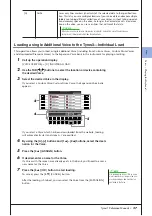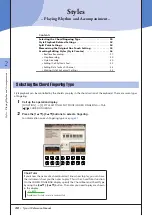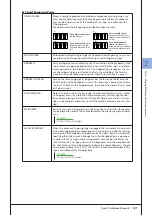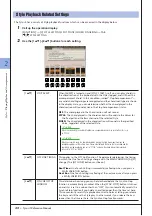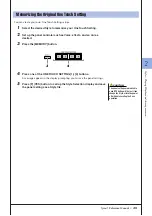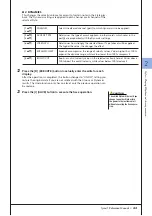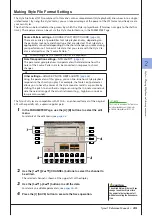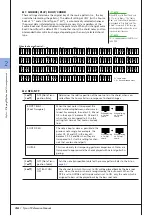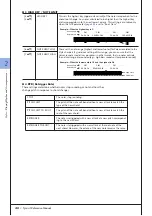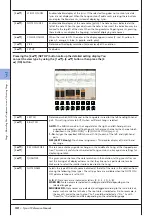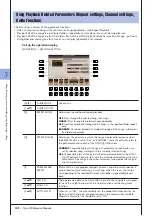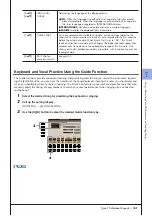
2
2
Styles – P
laying Rhythm and A
ccompaniment –
Tyros3 Reference Manual •
39
10
To continue recording with another channel, repeat steps 6 –9.
11
Stop recording by pressing the STYLE CONTROL [START/STOP] but-
ton.
12
Press the [EXIT] button to close the RECORD display.
13
Press the [I] (SAVE) button to execute the Save operation.
The edited Style will be lost if you
change to another Style or turn
the power to the instrument off
without executing the Save opera-
tion.
CAUTION
Rules when recording non-rhythm channels
• Use only the CM7 scale tones when recording the BASS and PHRASE
channels (i.e., C, D, E, G, A, and B).
• Use only the chord tones when recording the CHORD and PAD channels
(i.e., C, E, G, and B).
Using the data recorded here, the auto accompaniment (Style playback) is
appropriately converted depending on the chord changes you make during
your performance. The chord which forms the basis for this note conversion
is called the Source Chord, and is set by default to CM7 (as in the example
illustration above).
You can change the Source Chord (its root and type) from the PARAMETER
display on
. Keep in mind that when you change the Source Chord
from the default CM7 to another chord, the chord notes and recom-
mended notes will also change. For details on chord notes and recom-
mended notes, see
C R C
C R C
C = Chord note
C, R = Recommended note
For the INTRO and ENDING sections, any appropriate chord or chord progression can be
used.
NOTE
If you want to record the pattern with a Source Chord other than CM7, set the PLAY ROOT
and PLAY CHORD parameters on the PARAMETER Page (
NOTE
Summary of Contents for Tyros3
Page 1: ...EN Reference Manual ...



